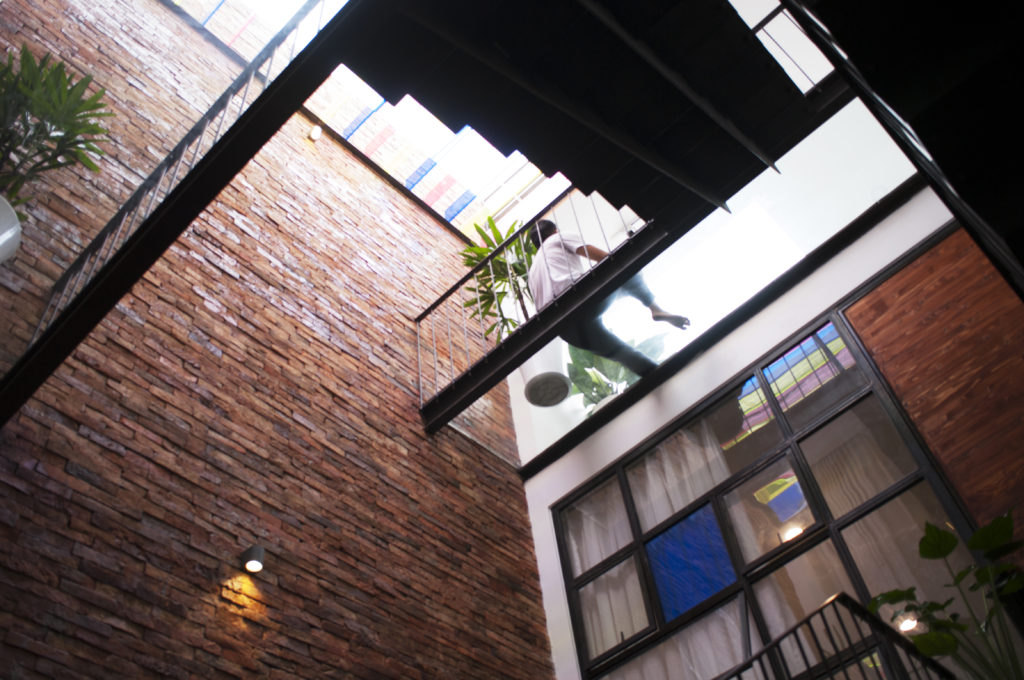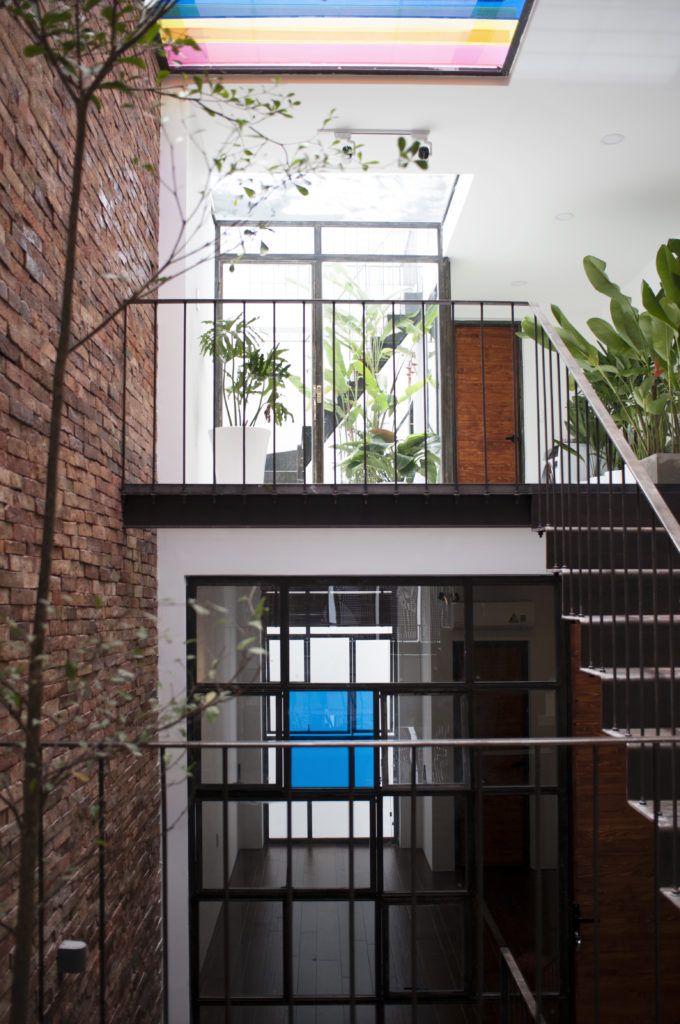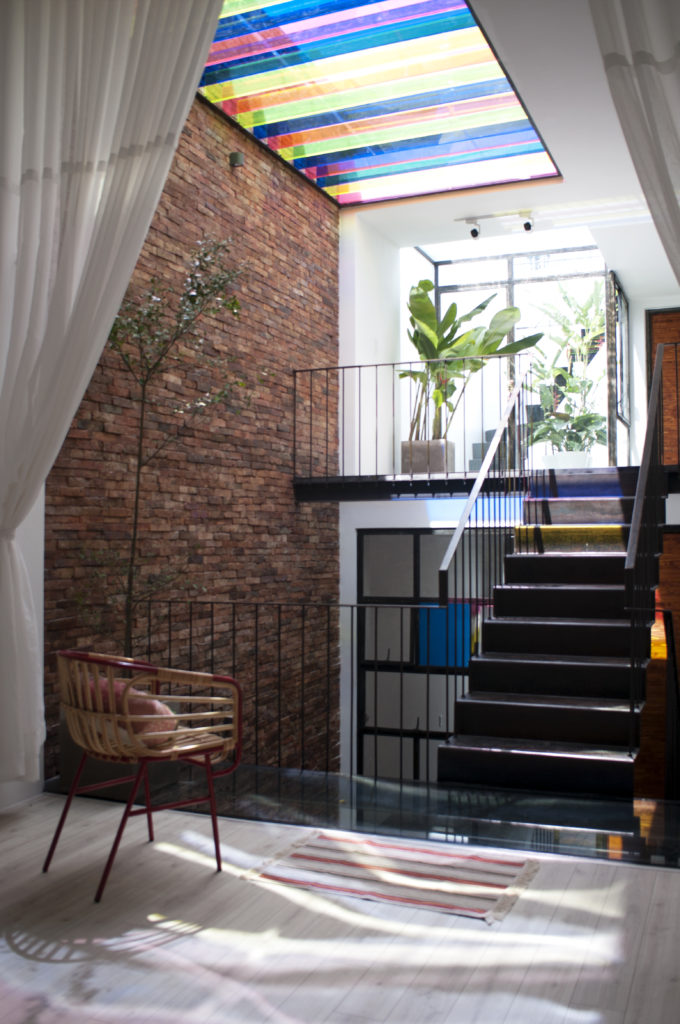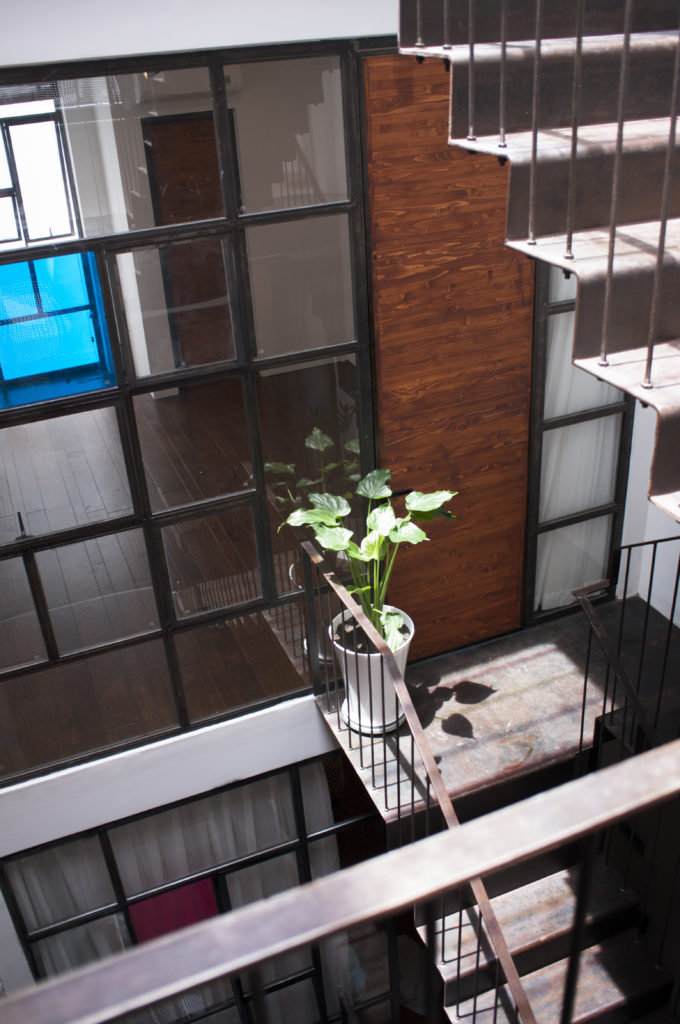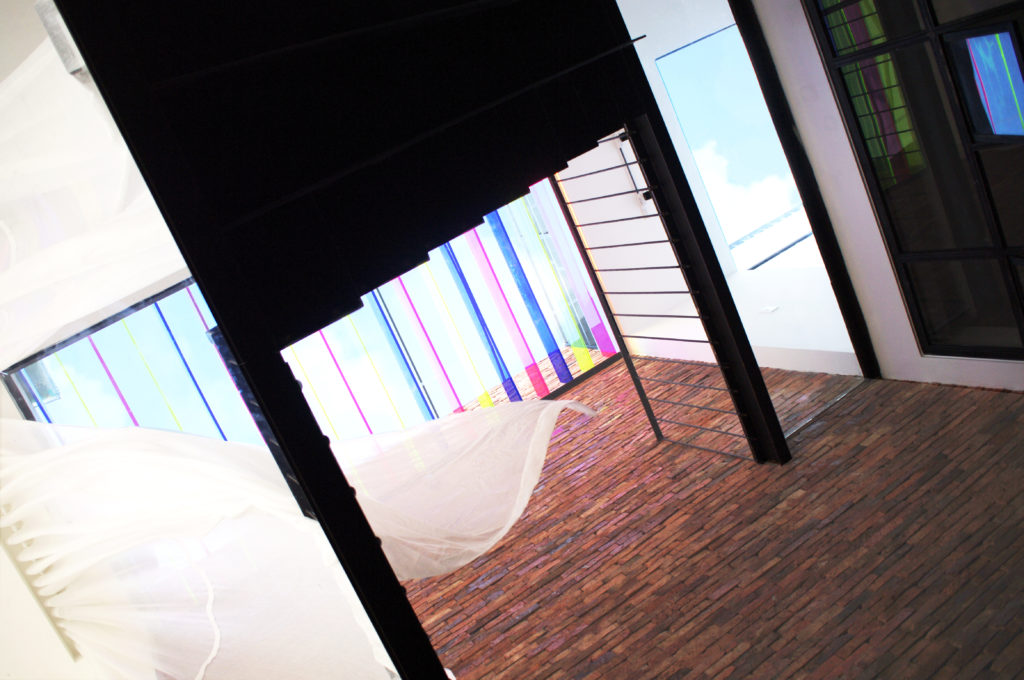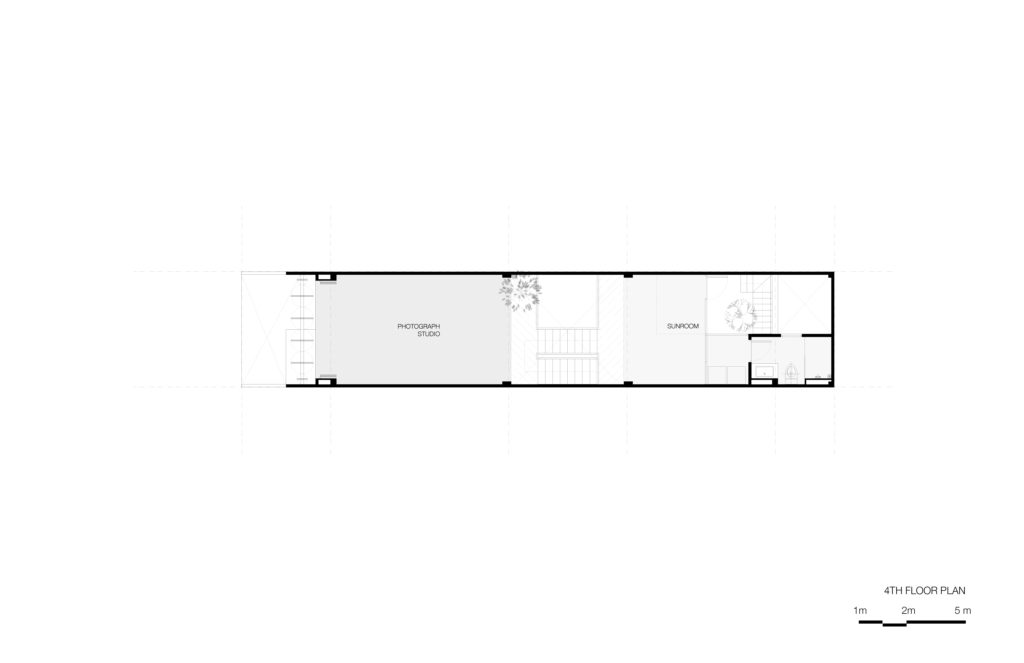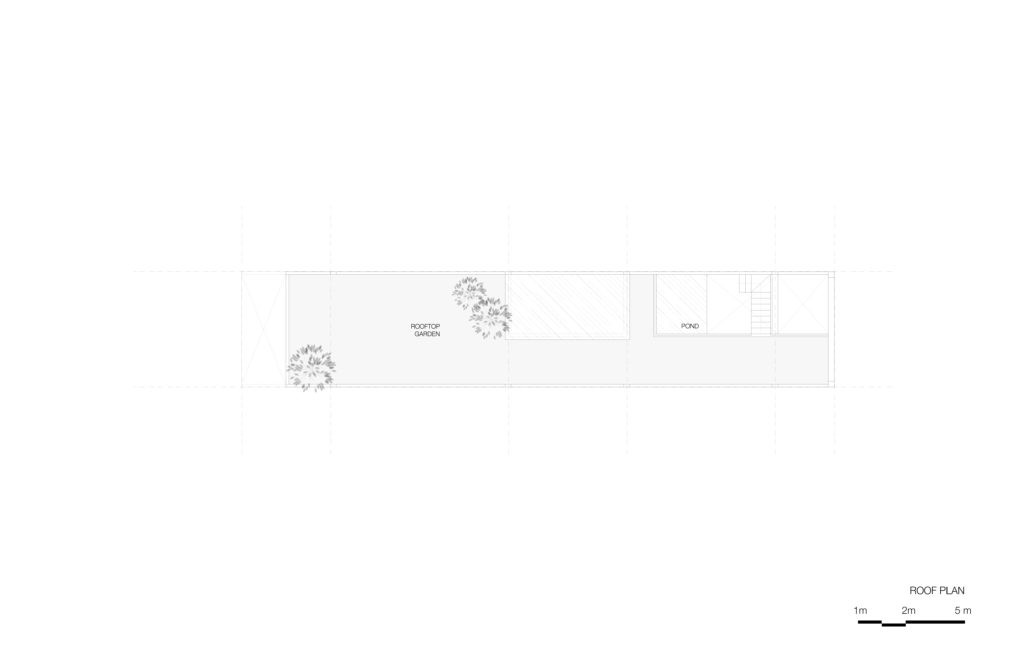Lantern House
Project Location: Quận 3, Ho Chi Minh City, Vietnam
Completion Year: 2018
Gross built area: 234 m2
Lead Architects: Ngô Quốc Dũng - Nguyễn Yến Phi
Photo credit: Han Deo
When asked to design a house in a highly dense neighborhood of Ho Chi Minh City, Vietnam, we are faced with many challenges (a West-facing long and narrow building lot with three sides blocked by other houses), which simultaneously pose fascinating opportunities for economical and innovative design solutions. The attempt is to create refreshing and playful living spaces for the young couple with their two small children as well as interesting photography opportunities for their business.
Learning from Vietnam’s diminishing traditional shop-house topology, we apply one of its most prominent characteristics – the use of multiple courtyards sandwiched in between living spaces, allowing for natural light, wind, as well as big plants to reach every corner of the building. This spatial organization ultimately brings nature into this small urban dwelling. The courtyard in the middle also acts as a connecting device, both visually and physically, where the majority of circulation happens on a sculptural stair made from single-sheet iron with light structure that activates the whole space. Shifted floor plates and glass walls/ floor sections also help enhance the idea of continuous space and make the house feel bigger.
Bright colors, often time seen in Vietnamese traditional decorative arts and architecture are used for the glass windows facing the courtyard and the glass beams above the light well. These accent colors liven up the space with dynamic reflections/ shadows and create a sense of playfulness, especially for the two ‘young adults’ in the house.
The West-facing façade is designed with a system of automatic door-sized louvers, protecting the house from severe tropical sun in the afternoon; the air inside is cooled down as wind pressure is changed when passing through the tiny holes on this facade. The louvers are both functional and ornamental, when closed will create an image inspired by patterns found on Vietnam’s ancient Dong Son drums. At night, the house becomes a lantern shining brightly within the neighborhood.
Fengshui principles are also applied creatively, with the screen acting as a shield and air/ light purifier; the colored beams to balance out the neutral colors of glass and iron; and the water pond to the back of the roof to cool down and neutralize the air flow.

